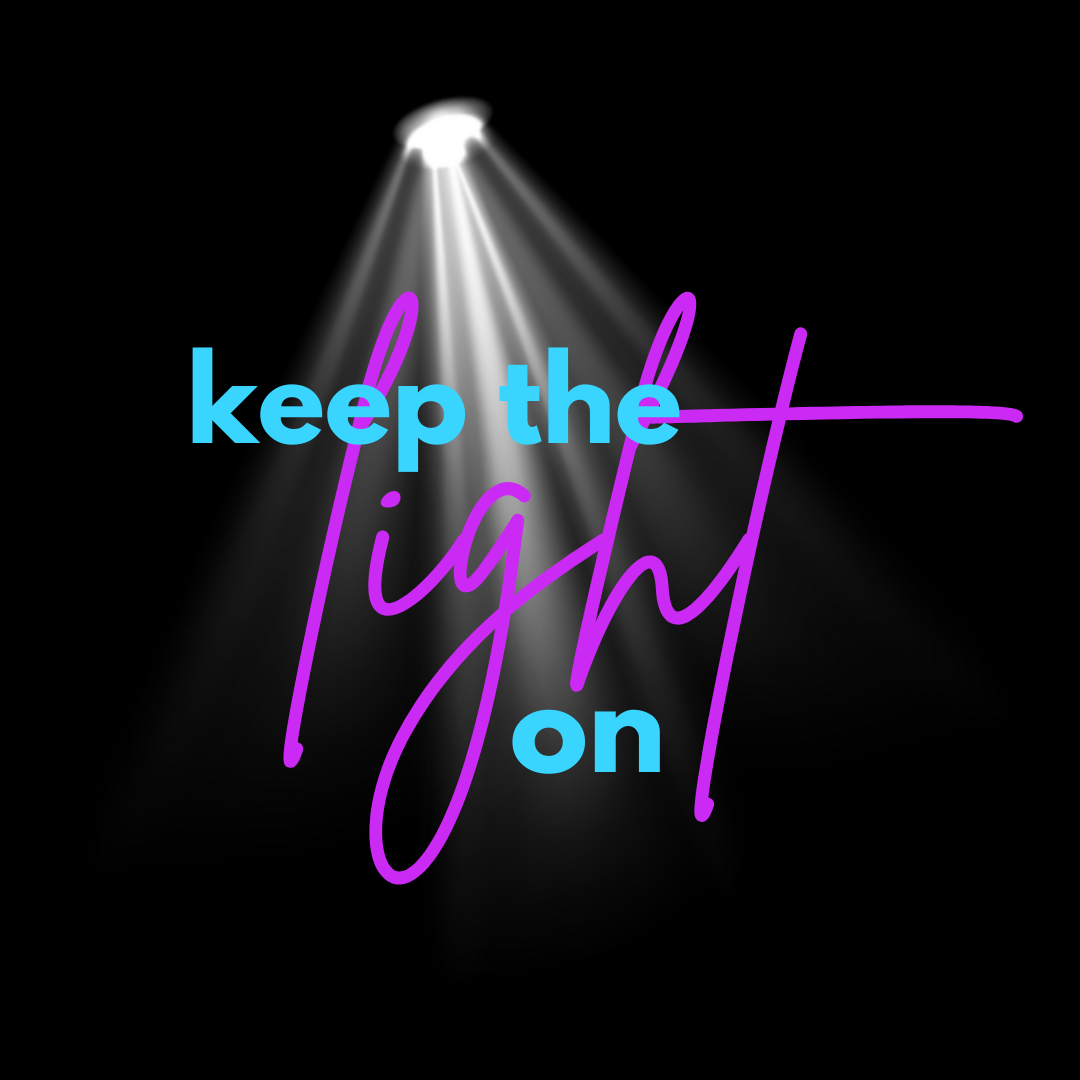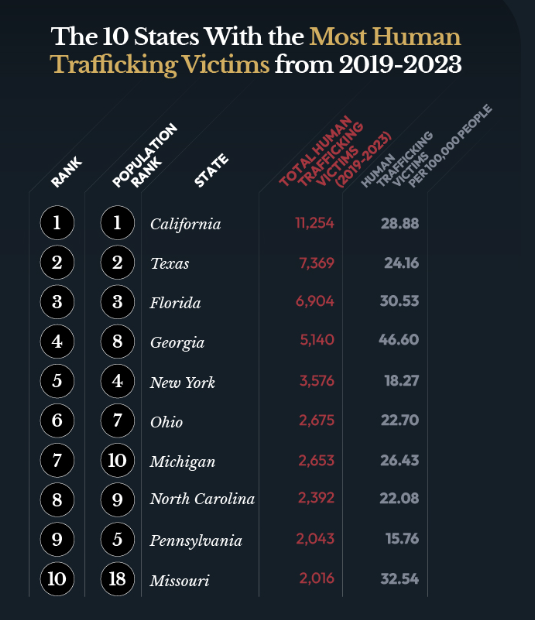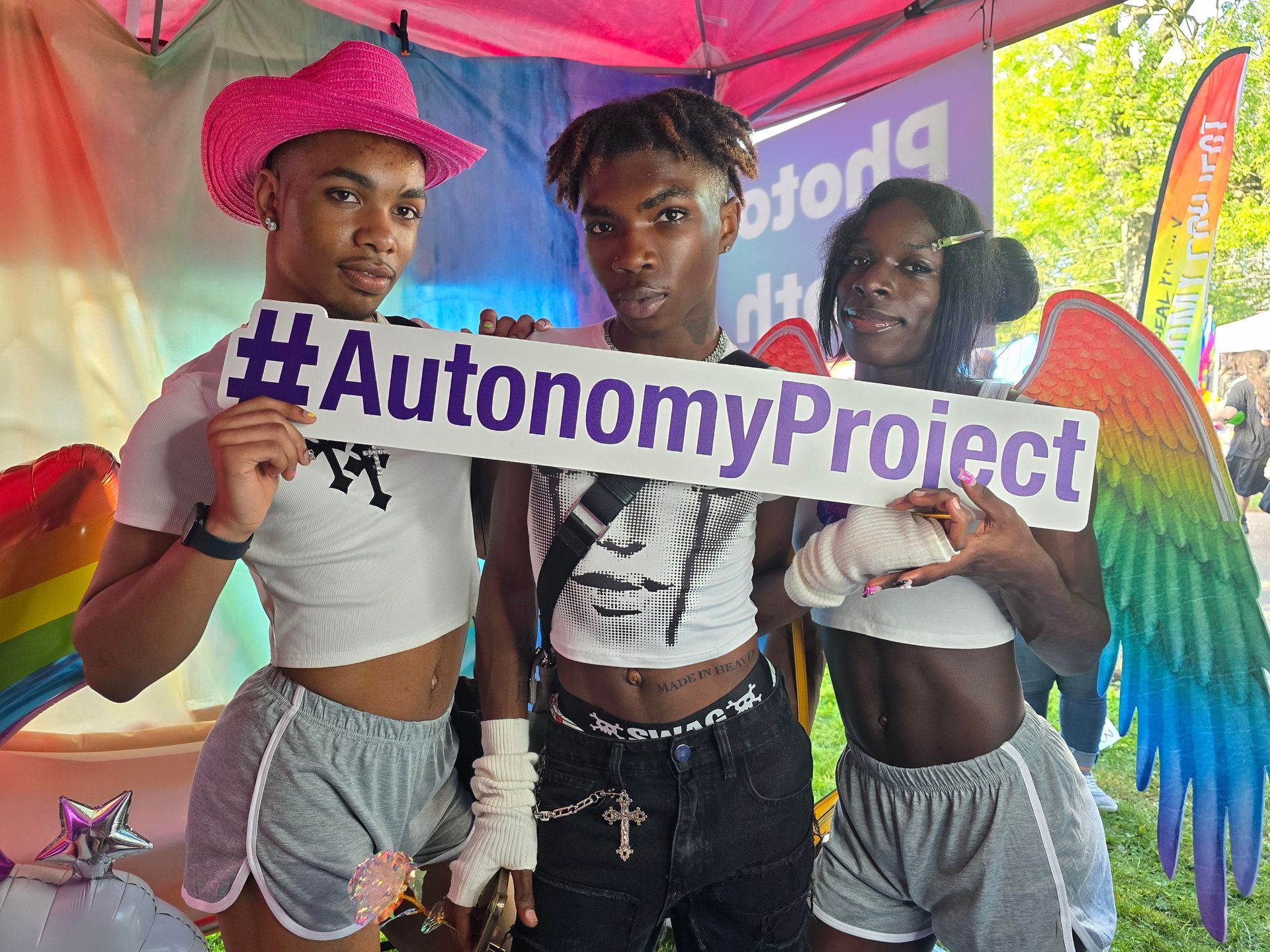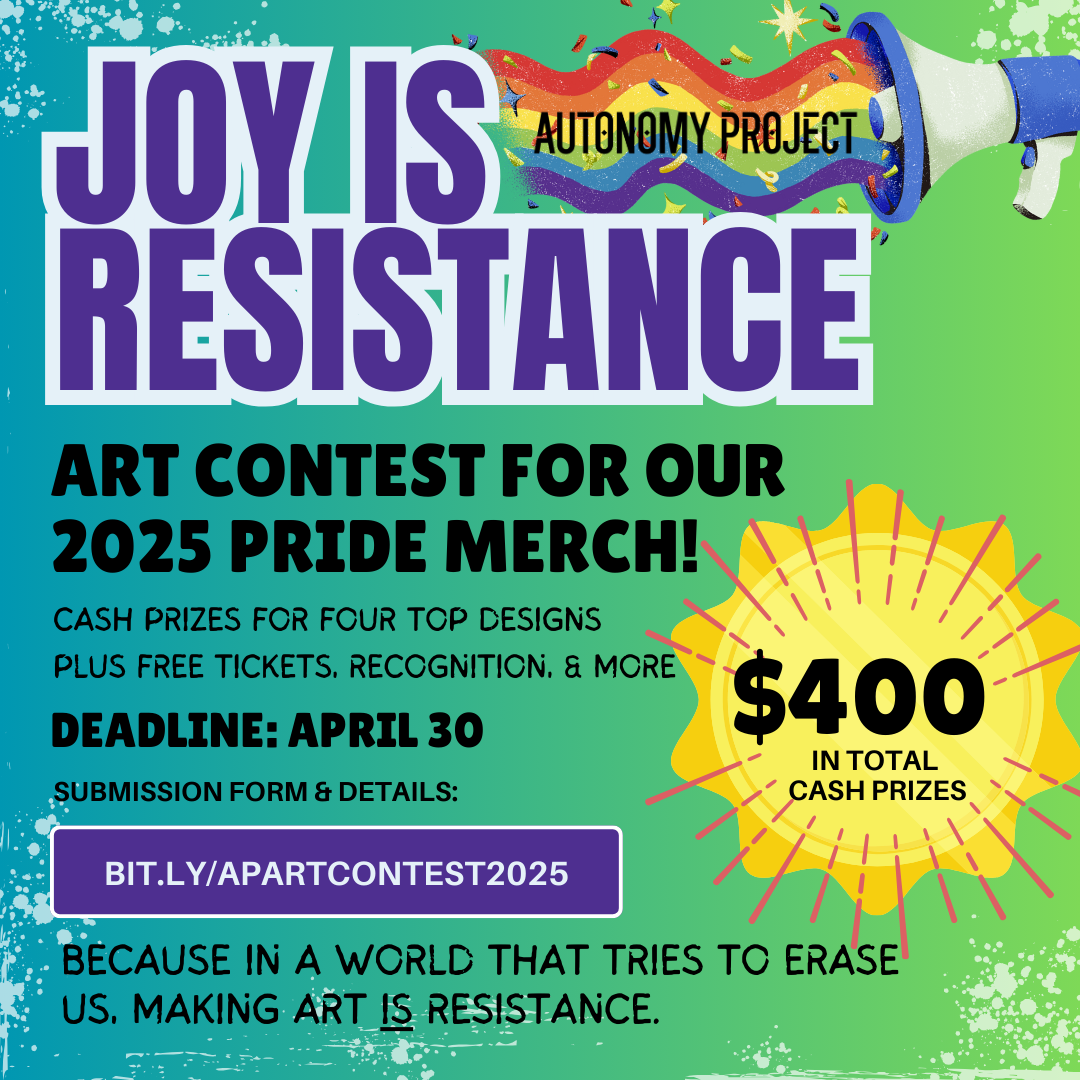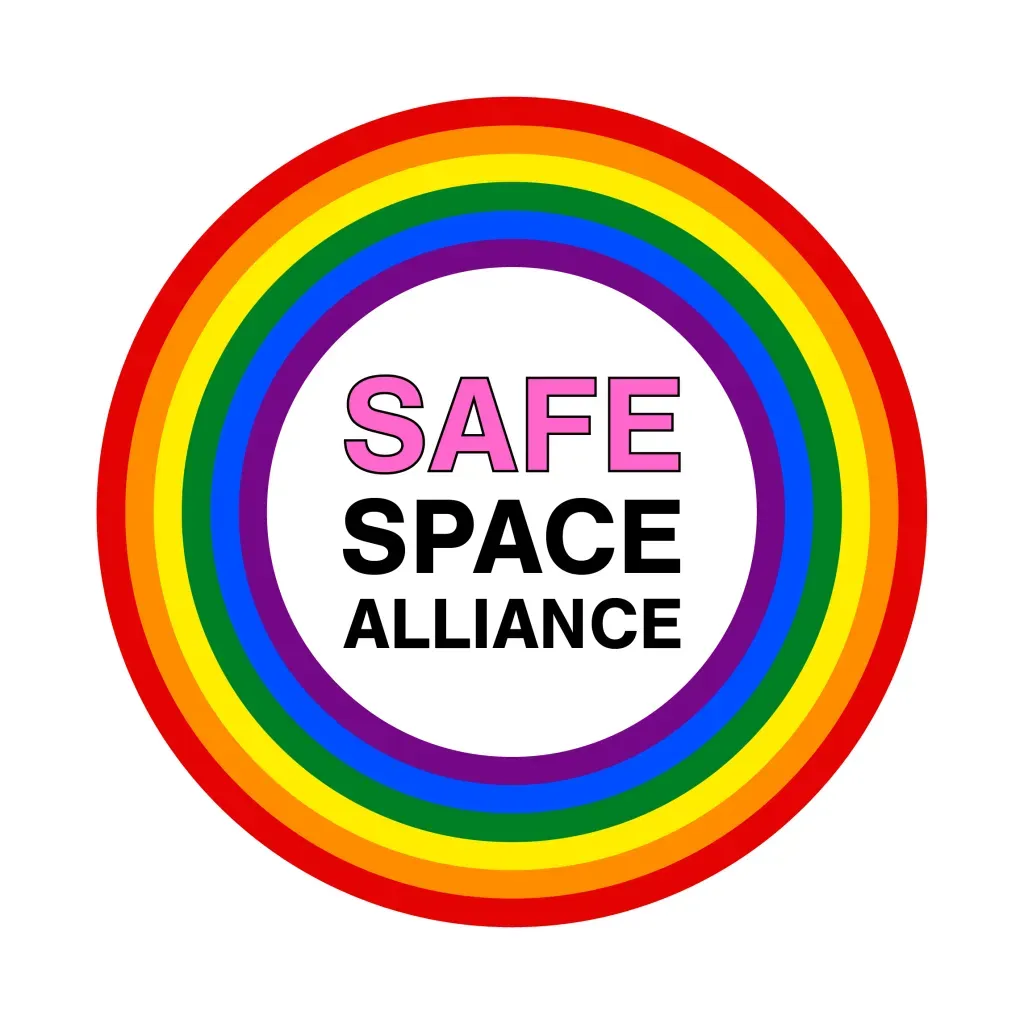Confronting Sex Trafficking: Why Our Communities Need a Survivor-Led Toolkit
Breaking the Silence on Sex Trafficking: Building The Toolkit Every Community Needs
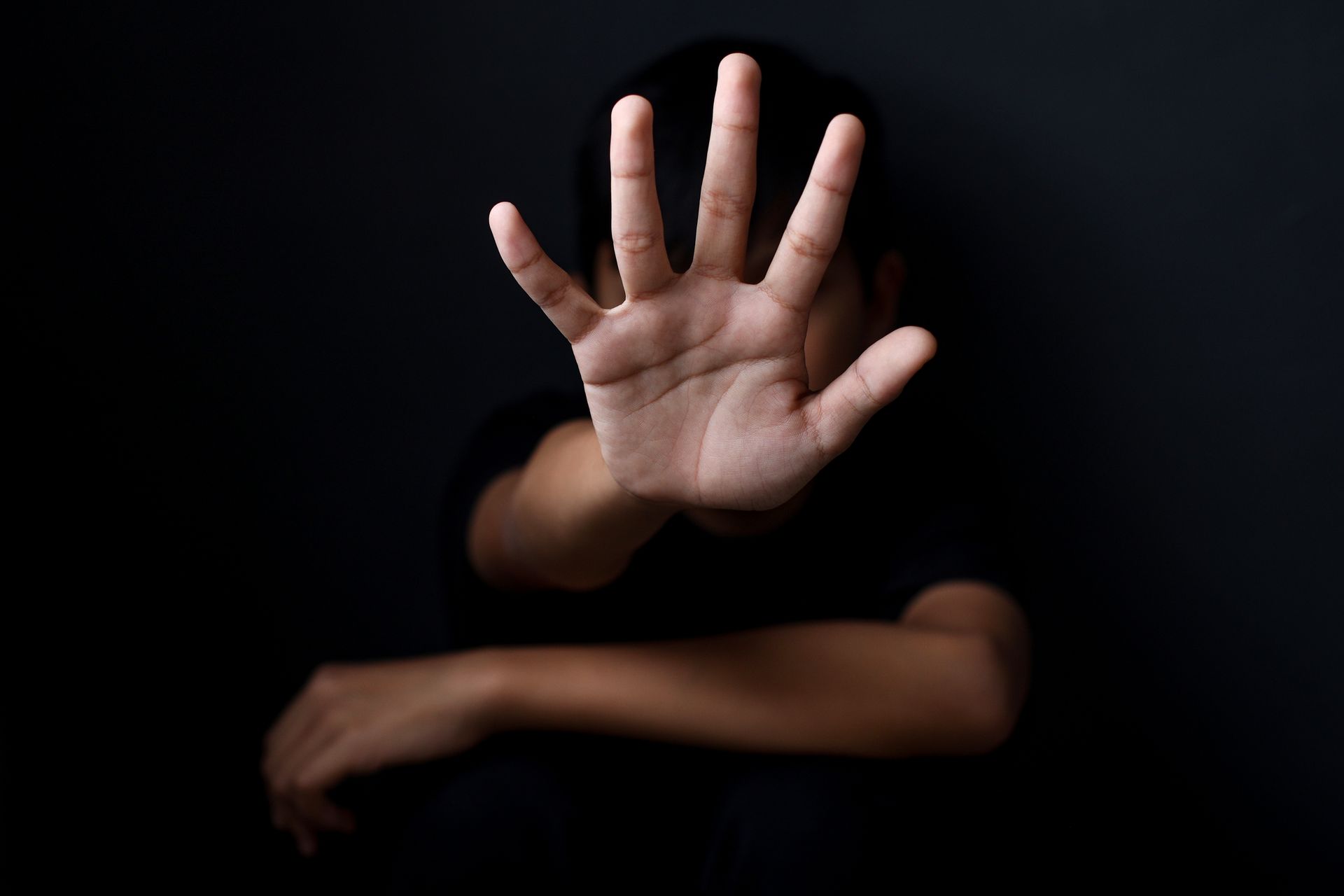
At The Autonomy Project, we believe in radical empowerment, and that means facing hard truths with honesty, clarity, and action. One of those truths is this:
sex trafficking happens in our communities. It’s not only the sensationalized images you see on TV. It shows up in subtle ways, hidden within nightlife, kink, sex work, and creative spaces. Too often, it thrives in silence.
When people hear “sex trafficking,” a lot of folks picture movie scenes—someone thrown into a van, held captive in a basement, waiting to be rescued. Those stories exist, but they’re not the full picture.
The truth? Trafficking usually looks way less dramatic and way more everyday. It’s manipulation. It’s someone using control, money, or threats to chip away at someone’s choices. It can hide in relationships, workplaces, or community spaces that look “normal” from the outside.
That’s why we’re building the Comprehensive Sex Trafficking Toolkit. It’s a survivor-led guide that clears up the myths, talks about what trafficking actually looks like, and gives people real tools to recognize and respond to it.
And we need to be clear about something: sex work isn’t trafficking. Consensual sex work is labor. Trafficking is exploitation. Mixing them up doesn’t help anyone—it just adds stigma and makes it harder for survivors and sex workers to get the safety and respect they deserve.
Shattering Myths About Sex Trafficking
When most people hear “sex trafficking,” they imagine dramatic scenes of kidnapping, locked rooms, and strangers in white vans. Those images make headlines, but they’re not the whole truth.
The reality is quieter and more insidious. Trafficking often hides in plain sight, built on manipulation, coercion, financial control, and the erosion of consent. It thrives in spaces that look ordinary: relationships, workplaces, creative communities, even places that claim to be safe.
It hides in plain sight, and because people don’t know what to look for, it goes unseen. But the harm is real.
The problem is, most of us have been taught the wrong story about trafficking. We’ve been told it’s the same thing as sex work, or that it only happens “somewhere else.” That confusion keeps people vulnerable.
Bottom line: sex work is a choice. Trafficking isn’t. Knowing the difference is how we keep people safe, support survivors, and protect the rights of workers who are already fighting stigma every day.
Building the Comprehensive Sex Trafficking Toolkit: Our Year-Long Roadmap
This isn’t a one-off document. It’s a full initiative that will unfold over the next year, combining research, content creation, training, and community distribution.
We’re already deep into the process—currently in
Phase 3—and we want to share the journey with you.
Phase 1: Research & Survivor Input (Completed)
Before any toolkit could be drafted, we gathered the foundations:
- Survivor interviews and lived experience testimony.
- Literature reviews and data collection on trafficking in alternative communities, nightlife, kink, and sex work–adjacent spaces.
- Identifying gaps in existing public resources.
This phase was about listening first. Survivor voices set the direction for everything that follows.
Phase 2: Drafting & Framework (Completed)
With the research in hand, we created the initial framework:
- Myth-busting sections to dismantle harmful stereotypes.
- Survivor guidance pieces to center resilience and healing.
- Community protocols designed specifically for event organizers, venues, and peer networks.
- Investigation into the various ways that trafficking affects alternative communities and how abusers hide in plain site.
The result is a living document that already offers clarity and direction, but still needs expansion and polish.
Phase 3: Expansion & Content Creation (Current)
We are now developing educational content around the toolkit to make it accessible and engaging:
- Video series explaining key topics in plain language.
- Social media graphics and carousels for quick education and myth-busting outreach.
- Printable posters and handouts for venues, clubs, and community spaces.
- Facilitator guides for organizers who want to integrate safety protocols into their events.
This phase is where we begin turning knowledge into shareable, community-ready materials.
Phase 4: Training & Outreach (Next 12 Months)
Once the toolkit and supporting materials are ready, we’ll move into direct implementation:
- Trainings for event organizers, staff, and volunteers on identifying red flags and supporting survivors.
- Workshops for community members on understanding the difference between trafficking and consensual sex work.
- Distribution of the toolkit online, in print, and through in-person outreach.
- Integration with our broader educational programming, ensuring this work is sustained long-term.

Fundraising component
The Comprehensive Sex Trafficking Toolkit is not just a document—it’s a year-long initiative with multiple moving parts. To bring it to life, we need sustained community investment. Fundraising ensures that this project has the resources to go beyond theory and into practice.
What Your Support Makes Possible
1. Survivor Expertise and Fair Pay
This project is survivor-led, which means paying survivors for their time, knowledge, and lived experience. Too often, survivors are expected to give away their stories for free. Our fundraising ensures they are compensated as professionals, not tokens.
2. Professional Materials & Design
- Graphic design for social media campaigns and digital outreach.
- Professionally produced video series that make the toolkit accessible in bite-sized, shareable formats.
- High-quality print runs of posters, handouts, and booklets for venues, clubs, and organizers.
3. Community Trainings
Funds support the development and facilitation of workshops for organizers, staff, and volunteers. This includes creating facilitator guides, staffing trainers, and ensuring we can deliver both in-person and virtual sessions.
4. Wide Distribution
From local venues to national networks, this toolkit is meant to be shared broadly. Printing, shipping, and digital hosting all require resources to make sure the toolkit gets into the hands of those who need it most.
5. Long-Term Sustainability
Our goal is not a one-off project, but a living resource that evolves as our communities change. Ongoing fundraising allows us to update materials, produce additional content, and keep trainings available year after year.
How to Help
- Donate directly: Every contribution, no matter the size, fuels this project.
- Sponsor a section: Donors can underwrite specific pieces (e.g., video production, printing costs, survivor stipends).
- In-kind support: Printing, media production, or venue hosting donations reduce costs and expand reach.
- Spread the word: Sharing this project is just as powerful as donating. Every repost, mention, or referral helps amplify the impact.
A Call to Community
This project is more than awareness, it’s prevention, intervention, and solidarity. Together, we can dismantle the systems that allow trafficking to persist and create a culture where safety, consent, and empowerment are non-negotiable.
The toolkit is just the beginning. The real impact will come from how we share it, use it, and live its principles in our everyday communities.
Share
